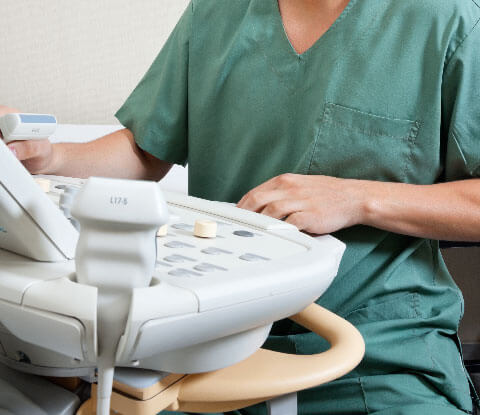Diagnostic ultrasound uses high-frequency sound waves to produce images of the inside of the body. The sonographer presses an instrument called an ultrasound transducer to the parts of the patient’s body that are being examined. The transducer emits pulses of sound that bounce back, causing echoes. The echoes are then sent to the ultrasound machine, which processes them and displays them as images.
Diagnostic medical sonographers specialize in different parts of the body. The following are examples of specific types of sonographers:
Abdominal sonographers specialize in imaging a patient’s abdominal cavity and nearby organs, such as the kidney, liver, gallbladder, pancreas, or spleen.
Breast sonographers specialize in imaging a patient’s breast tissues. Sonography aids mammography in the detection of breast cancer. Breast sonography is also used to track tumors in breast cancer patients.
Musculoskeletal sonographers specialize in imaging muscles, ligaments, tendons, and joints.
Pediatric Sonographers specialize in pediatric patients (birth to 13 years old) in a general, superficial and vascular setting.
Obstetric and gynecologic sonographers specialize in imaging the female reproductive system. Many pregnant women receive ultrasounds to track the baby’s growth and health.
Vascular Sonographers specialize in arterial and venous studies throughout the body.
Learn More:
Diagnostic Medical Sonography: What To Expect After Graduation
Career in Sonography
What It Takes To Become An Ultrasound Technician
Diagnostic Medical Sonographer Specializations




